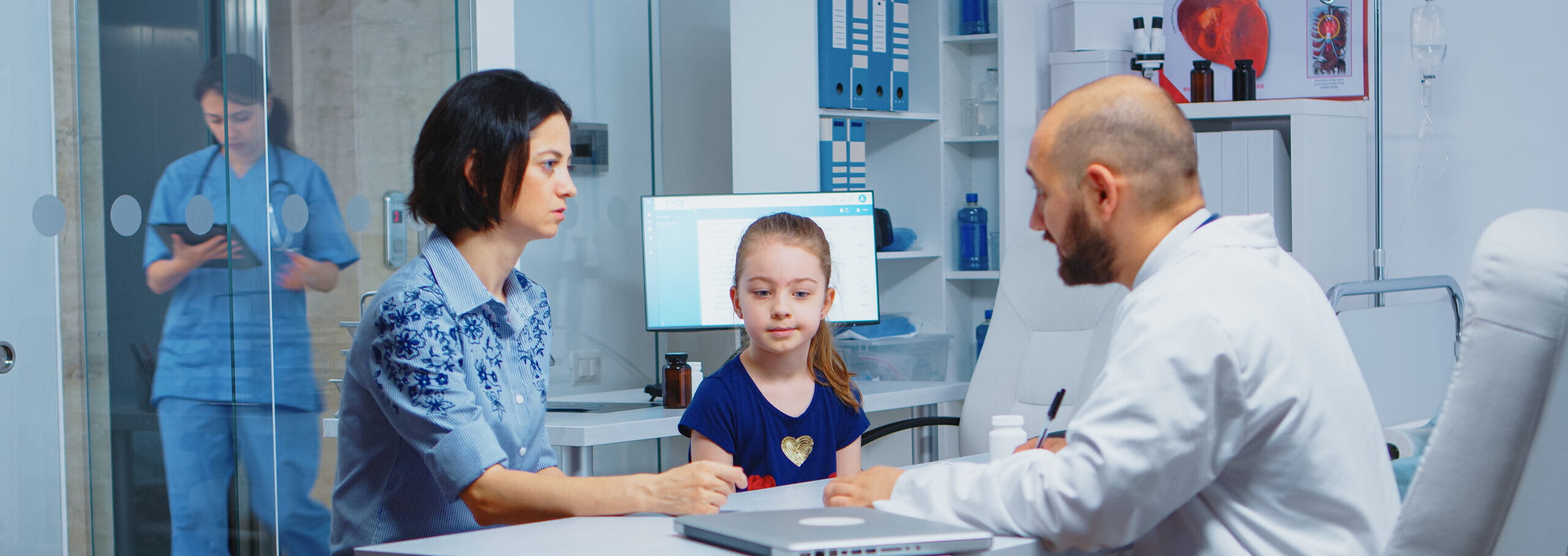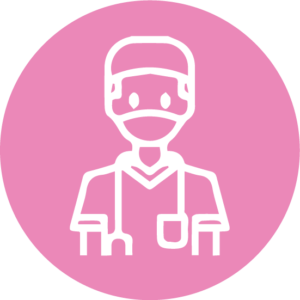

Words You Might Hear: Glossary of Terms Associated With Brain Cancer
Anaesthetic
The administration of medications, both gaseous and intravenous to provide unconsciousness during surgery.
Anticonvulsants
Medications to treat seizures.
Ataxia
Inability to coordinate movements and maintain posture; a tendency to lose balance.
Audiogram
The assessment of a child’s ability to hear.
Benign
Slow growing, non-malignant tumour that does not spread to other parts of the body. These benign lesions do not tend to recur. If incompletely removed, tumours may recur but will not spread.
Biopsy
The removal of a small portion of a tumour to allow a pathologist to examine it under the microscope and provide a diagnosis of tumour type.
Blood Count
The number of cells of different types contained in a sample of blood.
Bone Marrow Aspiration (BMA)
A Haematologist will use a thin needle to remove marrow from the centre of the bone. This is rarely performed but is used to check for spread of disease.
Bone Scan
Following the injection of a small amount of radioactive dye into a vein a gamma camera and a computer can take pictures of the bone to check for disease within the bones.
Central Line (Hickman Line or Port-a-Cath)
A long plastic tube that is inserted, under anaesthetic, into a large vein near the heart. Central lines are used to take blood samples and to give blood or platelet transfusions and medications.
Cerebrospinal Fluid (CSF)
A clear fluid that is produced in the ventricles within the brain. It functions as a cushion to prevent injury and it also provides nutrients. The fluid circulates around the brain and spinal cord and obstruction may cause hydrocephalus.
Cerebellum
Coordinates muscle movements for balance and complex actions.
Cerebrum
The largest part of the brain. It consists of two cerebral hemispheres. The right hemisphere, which controls the muscles of the left side of the body and the left hemisphere which controls the right side of the body and is also involved in emotion and language.
Chemotherapy
Treatment using one or more cancer drugs. Depending on the type of tumour, the drug or drugs will vary in the amount and frequency with which they are given. They may be given through an intravenous tube, by mouth or another route. They are prescribed by a physician.
Clinical Trials or Studies
Clinical Studies are the final steps of the long process of developing new treatments for patients. The studies have evolved from laboratory tests to phase 1 study. (Those treatments that are considered best are tested to see if giving the treatment is safe.) In a phase 2 study safe treatments from phase 1 are tested to see if they will shrink a tumour and prolong life. In a phase 3 study these safe and seemingly effective treatments from phase 2 are tested in a much larger number of patients and usually compared to what is considered the best treatment currently available.
Central Nervous System (CNS)
This refers to the brain, spinal cord, and cranial nerves.
CT Scan
A CT scan is a series of X-rays taken of a part of the body by using a computer.
Cyst
A cyst is a cavity usually filled with a fluid, sometimes associated with benign or malignant tumours.
Debulking of a tumour
An operation in which the skull is entered by removing a small piece of bone to gain access to the brain. The tumour is removed, and the small piece of bone is replaced. Gross total resection is a term to indicate the complete macroscopic removal of a tumour.
Dexamethasone
A drug used to decrease swelling around tumours.
Diabetes Insipidus
Diabetes Insipidus is a hormonal imbalance resulting in the kidneys inability to conserve water. This may lead to pronounced thirst and frequent urination.
Diplopia
Double vision
ECHO
An ultrasound (a technique using sound waves) of the heart muscle and heart function.
ECG (Electrocardiogram)
A test to record the electrical activity of the heart.
Epilepsy
This is a physical condition characterised by sudden brief changes in how the brain works. It is a symptom of a neurological disorder—a disorder that affects the brain and shows itself in the form of seizures.
Glomerular Filtration Rate (GFR)
A test to assess kidney function.
Hemiparesis
Muscle weakness on one side of the body. This may be temporary or permanent.
Hemiplegia
Complete paralysis on one side of the body. This may improve with time.
Hydrocephalus
This results when there is a blockage of the cerebrospinal fluid which constantly circulates around the brain and spinal cord and helps to cushion it. The brain normally maintains a delicate balance between the amount of cerebrospinal fluid that is produced and the amount that is absorbed. If there is a disruption in the system CSF may accumulate and cause intracranial pressure.
Immune System
This is the body’s natural defence system to fight infections which may be harmful to the body.
Intravenous
This is a method of giving drugs and sometimes nutrition straight into a vein via a tube.
Linear Accelerator
A machine used to deliver high energy radiation beams (radiotherapy) to a targeted tumour site.
Lumbar Puncture
This procedure withdraws spinal fluid from the lower back using a very fine needle. The small amount of fluid obtained is allowed to drip out slowly and this fluid is sent to the laboratory for testing. Pressure within the system may also be tested at this time.
Malignant
This describes a tumour that tends to grow quickly and may spread to surrounding and/or distant tissue.
MRI Scan
Magnetic Resonance Imaging Scan that produces a picture of organs and tissue of the body using a magnet and radio waves.
Nystagmus
The eye moves in a continuous beating or jerking movement over which the patient is unable to control. Nystagmus may signify problems in the brain stem or cerebellum.
Oedema
An excessive amount of fluid. Brain tumours may affect the blood vessels in their vicinity allowing extra fluid to seep into normal tissue.
Palliative
Relieving symptoms and easing suffering when the option of curative treatment does not exist.
Papillodema
Swelling of the optic nerve usually caused by pressure. This can be seen during an eye examination and may be associated with the presence of a brain tumour.
Paralysis
The complete lack of function of specific muscle groups.
Paraplegia
Paralysis of legs only.
Peripheral Nerve System
This comprises the nerves of the body not including the brain and spinal cord.
Pituitary Gland
A gland situated at the base of the brain that controls the function of many other glands.
Posterior Fossa Syndrome
Posterior Fossa Syndrome and Cerebella Mutism are often used interchangeably. This occurs in children after surgical resection of a posterior fossa tumour including medulloblastomas, ependymomas and astrocytoma’s. After surgery, patients may develop specific neurological deficits including the inability to speak, emotional mood swings, difficulty swallowing and hemiparesis. The signs and symptoms always develop within the first week of surgery and may take months to resolve.
Primary
The original site of the tumour.
Prognosis
The outlook or expected outcome of a disease or treatment.
Pulmonary Function Tests (PFTs)
Pulmonary function tests are a group of tests that measure how well the lungs take in and release air and how well they move gases such as oxygen from the atmosphere into the body’s circulation.
Radiotherapy
This is the use of invisible high beam radiation waves to treat cancer.
Remission
Complete disappearance of the signs and symptoms of a tumour in response to treatment.
Resection
The surgical removal of a tumour.
Seizure
A sudden and intense fit with convulsions where a person may fall, breathe heavily, and become incontinent OR an interruption of consciousness where the person becomes unresponsive and appears ‘blank’ or ‘staring’.
Stem Cell Harvest
The harvesting involves daily sub-cutaneous injections of G-CSF, an enzyme that triggers in the bone marrow a response to produce more cells. This triggered response is so constant and so frequent that the stem cells so produced are forced out into the blood stream and on the day, they reach a certain count level they are removed from the patient by apheresis – spinning off the stem cells in a process that allows the remaining cells to be returned to the patient. These cells may then be frozen in liquid nitrogen in a laboratory and be returned to the patient as an autologous stem cell transplant following treatment.
Stem Cell Transplant
Autologous (Re-infusion)—Stem cells are transplanted into a person after chemotherapy or radiation therapy destroys the stem cells in the bone marrow. Autologous stem cell transplant: the person themselves provides the stem cells before they receive the high dose treatment
Stereotaxis
A method used to accurately find specific areas within the brain, using a special frame, computer program and CT images.
Subtotal resection
Removal of the majority but not all the tumour.
Ventricles
Small fluid filled cavities within the brain. The site of production of cerebrospinal fluid.
Ventriculo-Peritoneal (VP) Shunt
A plastic catheter with a reservoir used to divert cerebrospinal fluid from the ventricles to the abdominal cavity. This is used for excess fluid to drain away.









